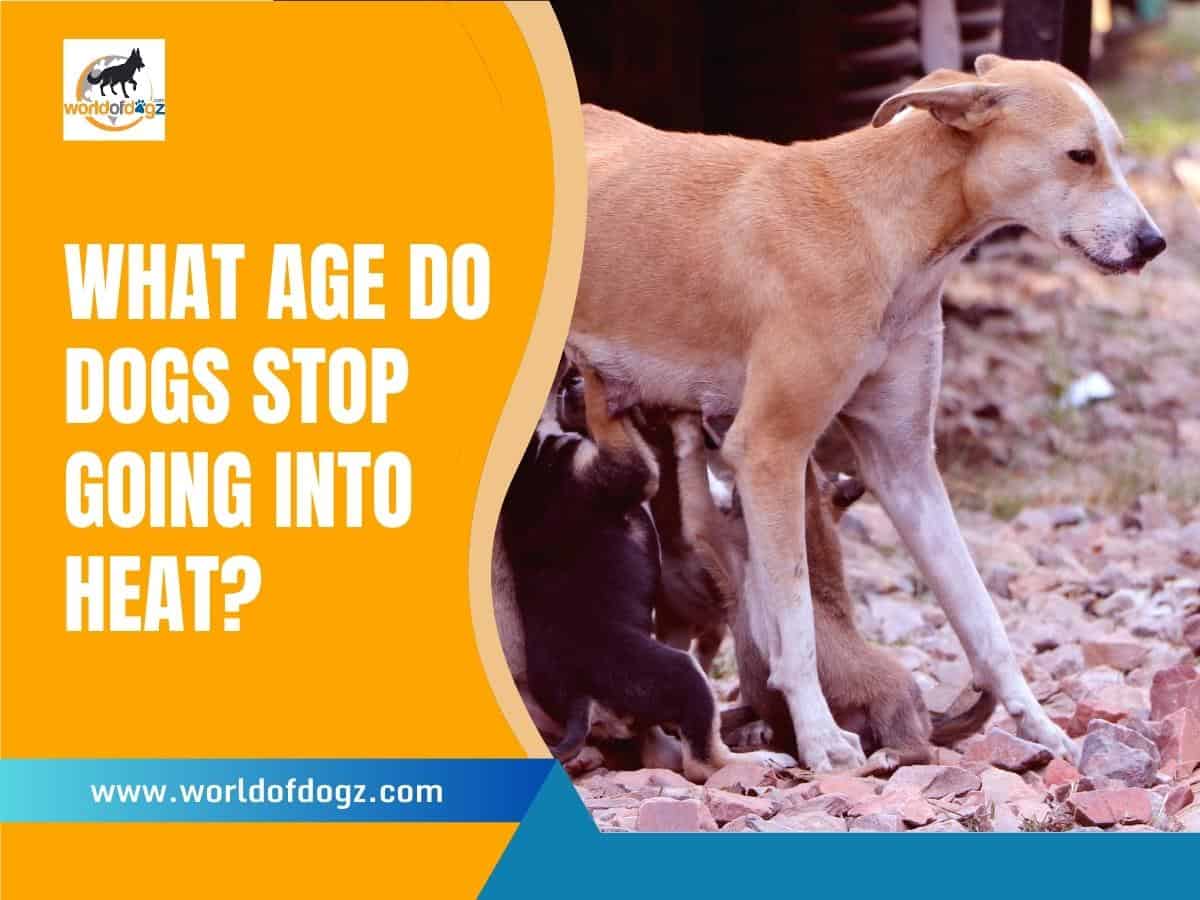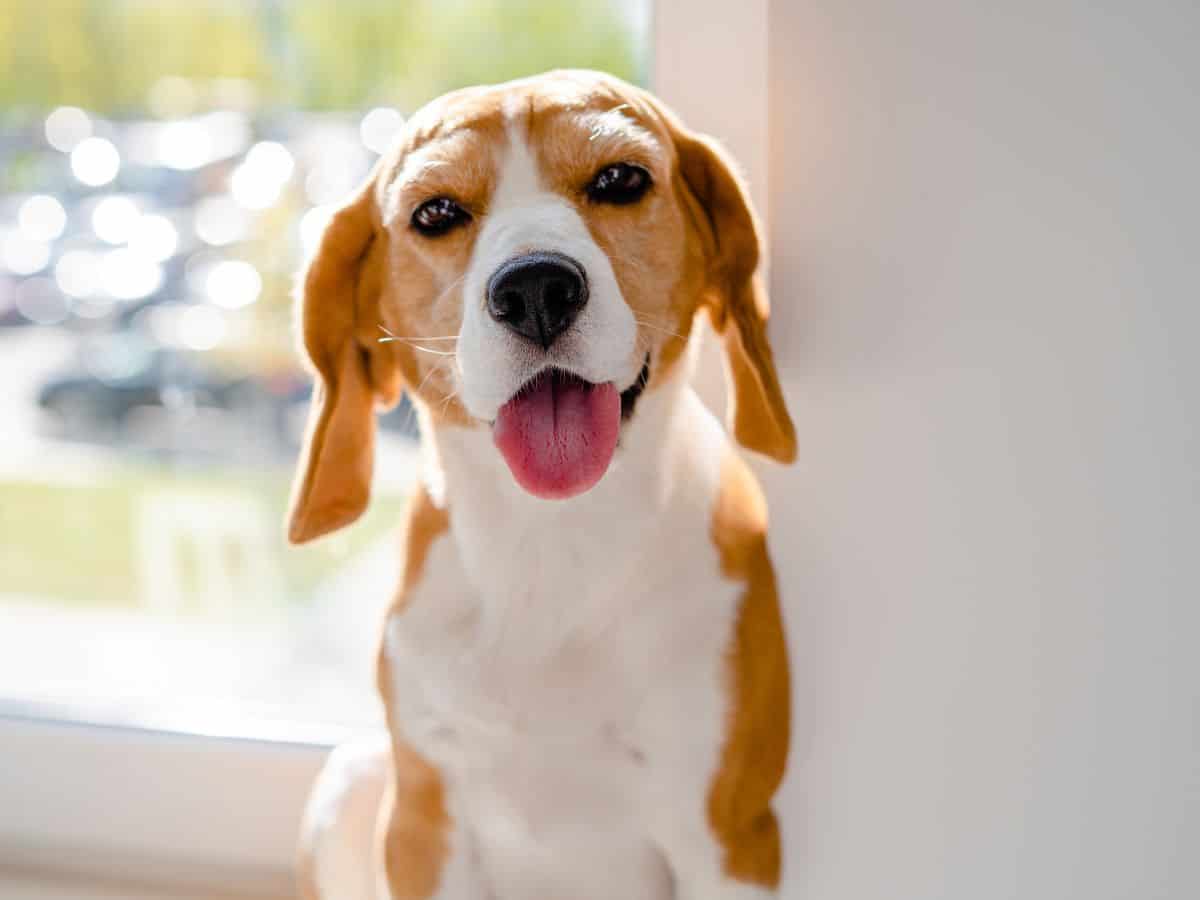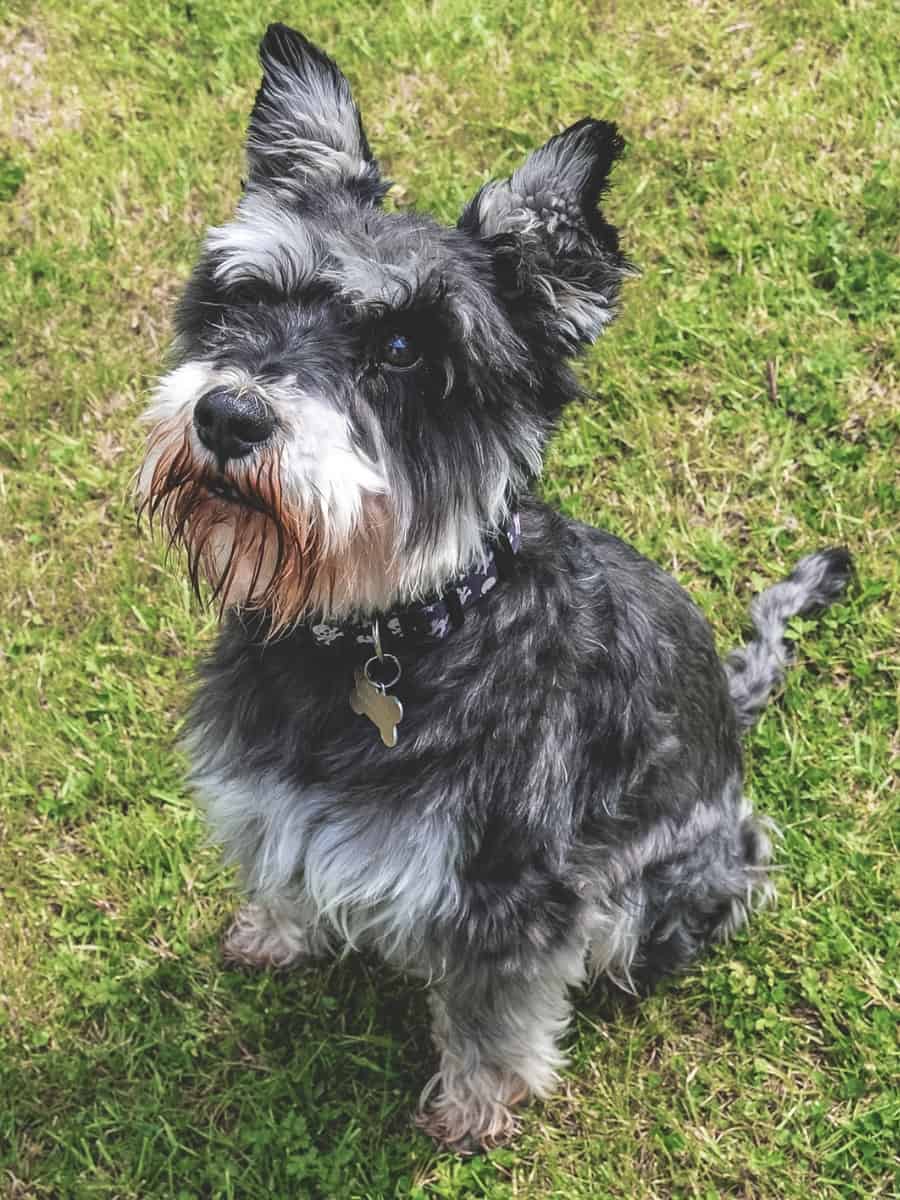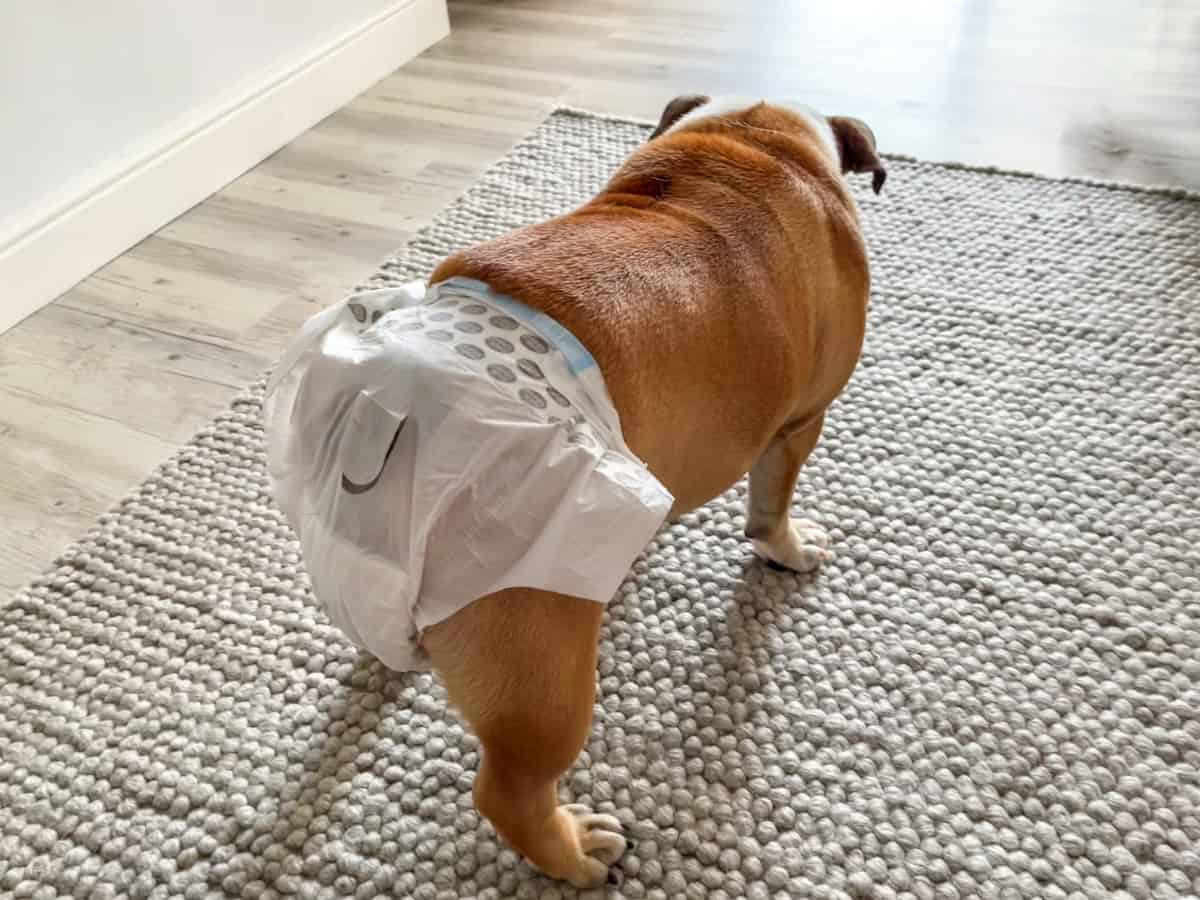Female dogs have heat cycles around every six months, which can be a challenging time for you as a pet owner. But have you ever wondered when your dog’s heat cycles will come to an end?
Female dogs do not stop having heat cycles entirely, as they do not experience menopause like humans. However, the frequency and intensity of heat cycles may diminish as they age. The age at which this occurs varies greatly among individual dogs, depending on breed, size, and health factors.
This article will explore when female dogs stop having heat cycles. We’ll shed light on what to expect as your dog ages and analyze the factors influencing the cessation of heat cycles in female dogs.
Let’s get started!

Understanding Canine Reproduction: Heat Cycles Explained
Canine reproduction is a fascinating topic for dog owners, particularly when understanding heat cycles or estrus in female dogs.
The heat cycle is the reproductive process that allows female dogs to become pregnant.
Typically, these cycles occur twice a year, lasting 2 to 4 weeks. The heat cycle can be divided into four primary stages:
- Proestrus: This stage lasts approximately 9 days, during which the dog’s vulva begins to swell, and a bloody discharge may be observed. The female dog attracts male dogs but is not yet receptive to mating.
- Estrus: Lasting between 3 to 21 days, the estrus stage is when the dog becomes receptive to mating, and her discharge changes from bloody to a more straw-colored fluid. This is the fertile period when ovulation occurs.
- Diestrus: This stage typically lasts 6 to 10 weeks and signifies the end of the dog’s receptivity to mating. Hormonal changes occur; if the dog is pregnant, this stage will last until the puppies are born. If not pregnant, the dog’s body will gradually return to its non-reproductive state.
- Anestrus: The final stage, anestrus, is a sexual inactivity that lasts 2 to 8 months before the next heat cycle begins. During this time, the female dog’s body recovers and prepares for the next cycle.
Understanding these stages and the accompanying hormonal fluctuations is crucial for dog owners, as they can impact their behavior and physiological processes.
As your dog ages, you may notice changes in the frequency and intensity of her heat cycles, which is a natural part of aging.
The Role of Breed and Size in Heat Cycle Frequency
Breed and size significantly determine the frequency and patterns of heat cycles in female dogs. While the average female experiences heat cycles twice a year, this can vary considerably based on these factors.
Dog owners need to know how their pet’s breed and size might influence the regularity of their heat cycles to better anticipate and manage their dog’s reproductive health.
- Small breeds: Generally, smaller breeds tend to have more frequent heat cycles, sometimes as often as three times a year. Examples of small breeds that may experience more frequent cycles include Chihuahuas, Shih Tzus, and Toy Poodles.
- Medium and large breeds: Conversely, medium and large breeds typically have heat cycles closer to an average of twice a year. Breeds like Labrador Retrievers, Golden Retrievers, and German Shepherds fall into this category.
- Giant breeds: Some giant breeds, such as Great Danes and Saint Bernards, may experience even fewer heat cycles, with some dogs having just one cycle per year.
You should remember that these are general guidelines, and individual dogs may deviate from these patterns due to factors like genetics, overall health, and environmental conditions.
Consulting with a veterinarian familiar with your dog’s breed can also provide valuable insights into what you can expect regarding her heat cycle frequency.

At What Age Does a Female Dog Stop Going Into Heat?
Female dogs don’t actually stop going into heat. But as they age, they may not always show the external or behavioral signs that they are actually in season, which can sometimes be referred to as a “silent heat.” However, there is no specific age at which female dogs stop going into heat.
Although your dog may not be showing signs of being in heat, she could still get pregnant. Ideally, you should consider having her spayed.
She might also have an ovarian or hormonal disease that hasn’t been adequately addressed that has stopped her from cycling. You should have her checked out to ensure it is not a severe condition.
Aging and Its Impact on Female Dog Heat Cycles
As female dogs age, changes in their heat cycles are likely to occur. These changes can manifest in various ways, including cycle frequency, duration, and intensity.
You should recognize the potential impact of aging on your dog’s reproductive patterns and monitor your pet for any signs of change.
- Frequency: As your dog grows older, her heat cycles may diminish. Although this is not the case for every dog, it is expected. Some senior dogs may experience heat cycles less regularly or have an irregular cycle pattern.
- Duration: The length of a heat cycle may also change as your dog ages. Senior dogs might have shorter heat cycles or display more subtle signs that are harder to detect. This can make it more challenging for dog owners to identify when their pet is in heat.
- Intensity: The intensity of the heat cycle can be affected by aging. Older dogs may exhibit less pronounced physical and behavioral signs during their cycles, such as less swelling of the vulva or a less noticeable discharge.
- Fertility: As with many species, fertility tends to decline in dogs as they age. While older dogs can still become pregnant, their chances of a successful pregnancy are generally lower than those of younger dogs. This reduced fertility can be attributed to various factors, including decreased egg quality and changes in hormone levels.
You must closely observe your aging pet for any alterations in her heat cycle patterns. Understanding these changes and identifying potential issues will enable you to provide the best care for your dog throughout her life.
Health Factors Influencing Canine Reproductive Patterns
Various health factors can influence canine reproductive patterns, including heat cycle frequency, duration, and intensity.
- Hormonal imbalances: Conditions that affect hormone production or regulation, such as hypothyroidism or Cushing’s disease, can impact a dog’s heat cycle. These imbalances may cause irregular cycles, prolonged intervals between cycles, or an absence of heat cycles altogether.
- Infections: Infections of the reproductive system, such as pyometra (a severe uterine infection), can disrupt a dog’s heat cycle and pose a significant risk to her health. Immediate veterinary attention is required, as the condition can be life-threatening if left untreated.
- Ovarian cysts or tumors: The presence of ovarian cysts or tumors can interfere with a dog’s heat cycles by altering hormone levels and disrupting the normal functioning of the reproductive system. These issues may lead to irregular or absent heat cycles.
- Nutritional deficiencies: A dog’s diet is crucial in maintaining her overall health and reproductive health. Nutritional deficiencies, such as insufficient protein or specific vitamins and minerals, can impact the regularity and intensity of her heat cycles.
- Obesity or significant weight loss: Drastic changes in a dog’s weight can disrupt her hormone balance, leading to irregular or absent heat cycles. Maintaining a healthy weight is essential for your dog’s well-being and reproductive health.
- Stress: Environmental or emotional stress can also influence a dog’s heat cycles. Significant stressors, such as moving to a new home or adding another pet to the household, may cause temporary disruptions in a dog’s reproductive patterns.
You must be vigilant about your pet’s health if you have concerns or notice changes in your dog’s heat cycle.

Signs of Changes in Your Dog’s Heat Cycles
As your dog ages or experiences changes in her overall health, you may notice alterations in her heat cycles. Be vigilant and recognize these signs, as they can provide valuable information about your dog’s reproductive health.
Here are some indications that your dog’s heat cycles may be changing:
- Irregular frequency: If your dog’s heat cycles become less predictable or deviate significantly from her previous pattern, this may signal a change in her reproductive pattern. Keep track of her cycles to help identify any irregularities.
- Altered duration: A change in the length of your dog’s heat cycles, whether shorter or longer than usual, may indicate a shift in her reproductive health.
- Less noticeable physical signs: If your dog exhibits less swelling of the vulva, reduced discharge, or other less obvious physical signs during her heat cycle, this may suggest changes in her reproductive patterns.
- Subtle behavioral changes: Older dogs or those experiencing health issues may display more subtle behavioral signs during heat cycles. Watch for changes in your dog’s behavior, such as increased affection, restlessness, or frequent urination, that may be less pronounced than in her earlier cycles.
- Decreased fertility: If your dog has a reduced ability to conceive or experiences complications during pregnancy, this may indicate changes in her reproductive health.
- Changes in overall health: If your dog is experiencing other health issues, such as weight fluctuations, hormonal imbalances, or infections, these can impact her heat cycles.
By closely monitoring your dog’s heat cycles and being attentive to any alterations, you can better understand her reproductive health and ensure that she receives the appropriate care and attention throughout her life.
Managing Your Dog’s Heat Cycle: Tips for Dog Owners

Managing your dog’s heat cycle can be challenging, but with the right knowledge and approach, you can ensure your pet’s comfort. Here are some practical tips for managing your dog’s heat cycle effectively:
- Provide a clean and comfortable space: Ensure your dog has a clean, comfortable area to rest during her heat cycle. You can use puppy pads or towels to protect your flooring and make cleaning up easier.
- Invest in dog diapers: Dog diapers or sanitary pants can be a helpful tool for managing your dog’s discharge during her heat cycle. These products help keep your home clean while providing your dog with added comfort.
- Groom your dog regularly: Regular grooming is essential for keeping your dog clean and comfortable during her heat cycle. Pay attention to her rear end and remove any dried discharge or debris to prevent irritation and discomfort.
- Monitor interactions with other dogs: While your dog is in heat, it is crucial to monitor her interactions with other dogs, particularly unneutered males. This will help prevent unwanted pregnancies and protect your dog from aggressive behavior.
- Maintain regular exercise: Continue to provide your dog with regular exercise during her heat cycle, but be mindful of her energy levels and any potential discomfort. Exercise can help reduce stress and keep your dog in good physical condition.
- Offer extra care and attention: Your dog may require additional care and attention during her heat cycle, as she may experience increased anxiety or discomfort. Be patient and understanding, providing reassurance and affection as needed.
Related Posts You May Like:





